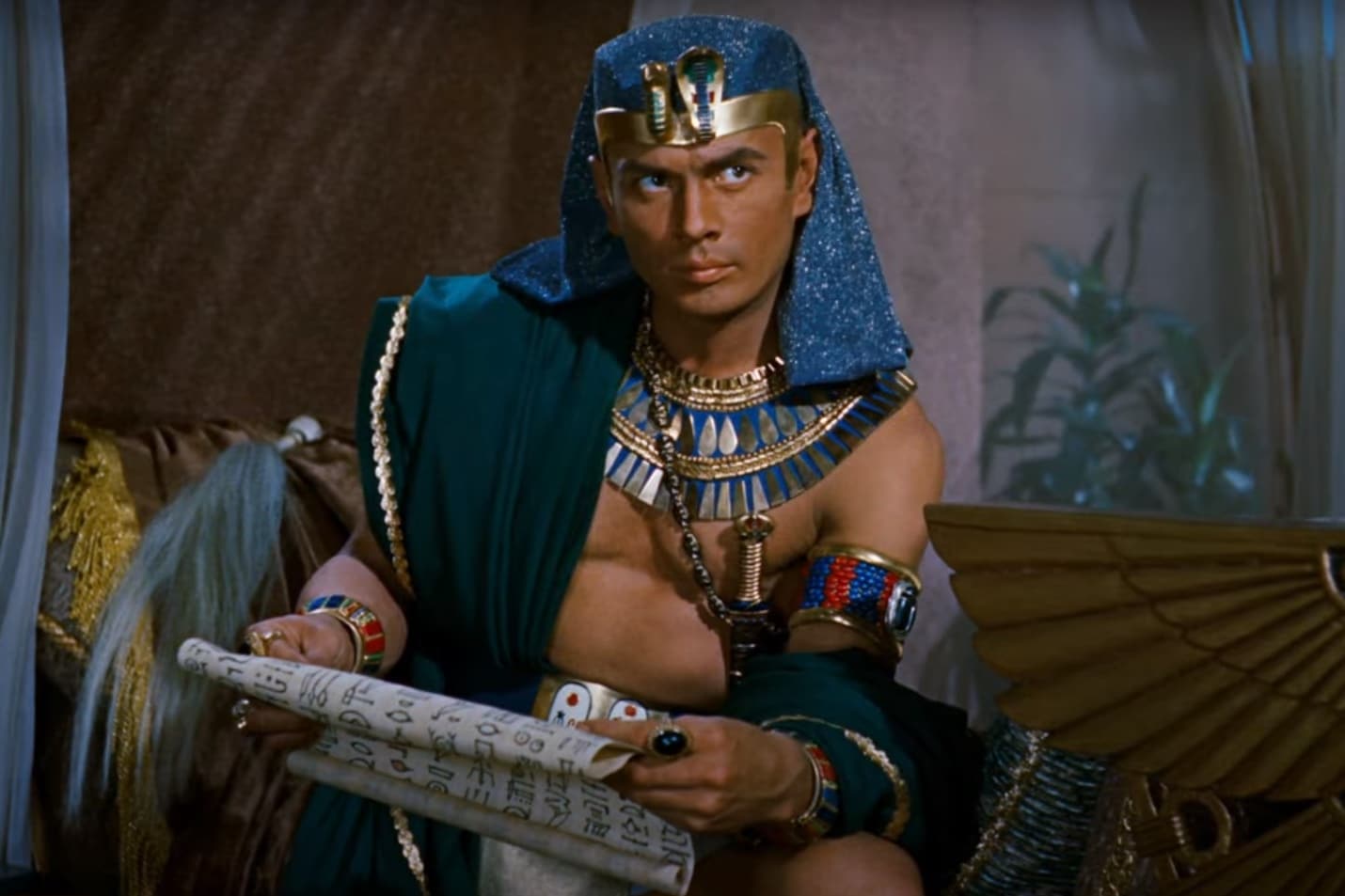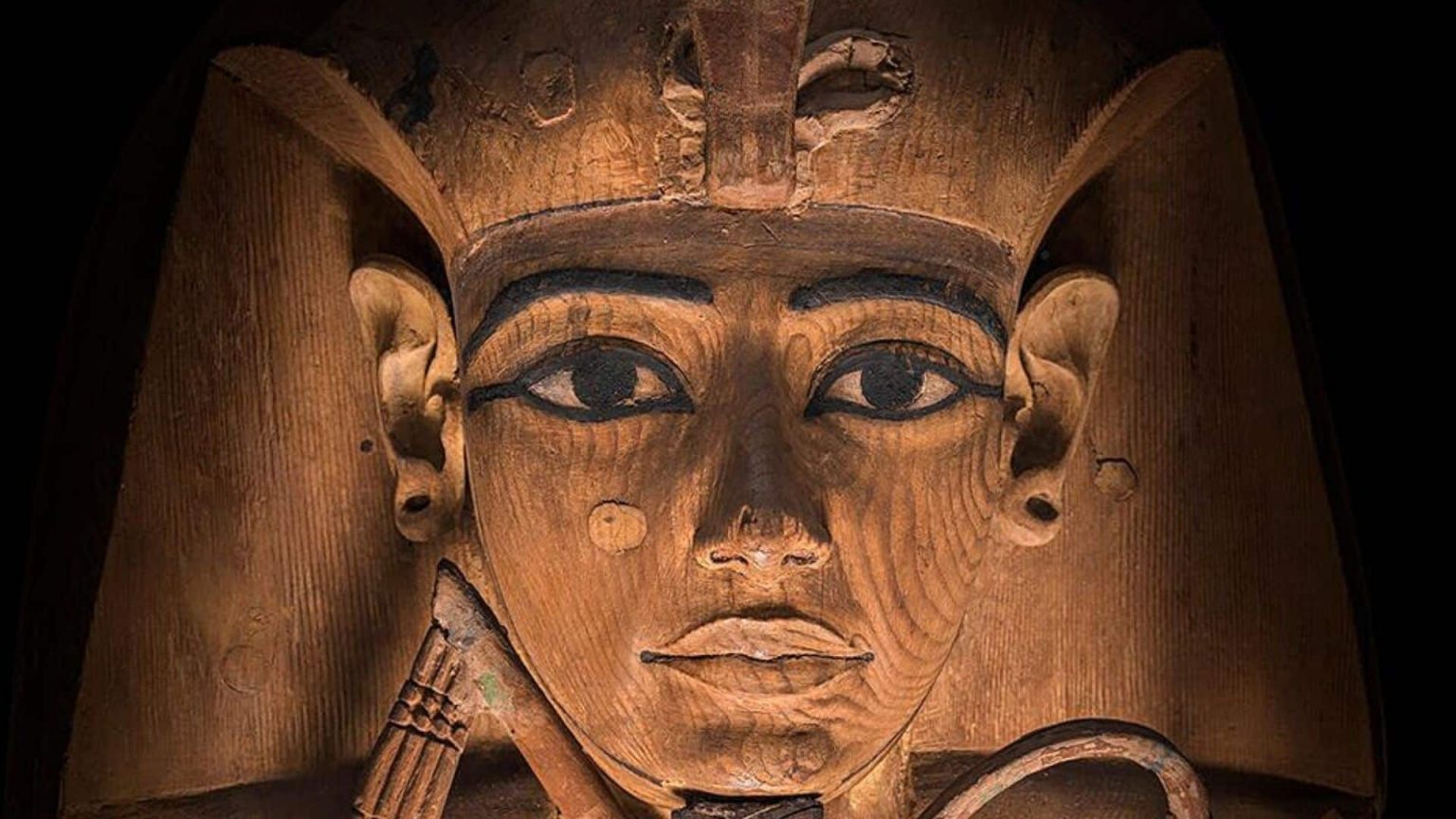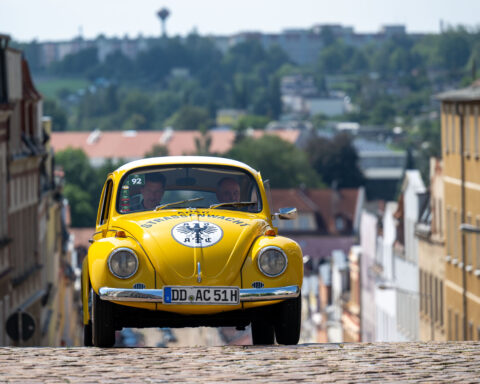As part of the exhibition “L’Or des Pharaons,” which opens Friday at the Grande Halle de la Villette, France welcomes for the second time an exceptional treasure: the painted wooden coffin, over 2900 years old, of one of the greatest pharaohs of antiquity. A sign of recognition from Egypt following the rescue of the famous mummy in the 1970s.
A pharaonic journey from Cairo
After having welcomed in 2019 certain elements of the treasure of the tomb of Tutankhamun, the Grande Halle de la Villette is getting ready to welcome nearly 180 exceptional objects and artifacts, this time linked to another pharaoh of the New Kingdom: Ramses II. Among them is a priceless piece from Cairo that landed discreetly 10 days ago on the tarmac of Le Bourget airport.
Like a funeral procession according to the rites formerly in force and with respect usually due to a head of state, a mysterious cargo entered Paris under police escort. Opened with infinite precautions by the directors and curators of The Gold of the Pharaohs exhibition, this large box soon revealed its precious contents: the sarcophagus of Ramses II. This vehicle and protective element in his journey to the afterlife is, without a doubt, the centerpiece of this exhibition set up by the World Heritage Exhibitions company.
It is a cedar wood sarcophagus found in the Valley of the Kings in 1881. This one rested there in the company of other royal mummies sheltered from looters by the priests of Ancient Egypt in the cache known as “Deir el Bahari.”
Usually exhibited in the National Museum of the City of Cairo, this anthropomorphic royal coffin represents the pharaoh Ramses II under the features of Osiris, the god of the dead giving life again. The king appears with his arms crossed, holding in each of his hands the heqa stick and the nekhakha whip. He is also wearing a nemes adorned with the erect cobra and sports a false beard under his chin.
Originally, the work was to be covered with gilding and inlays of gems or glass. However, the surface has most likely been scraped and repainted in yellow, with a series of brightly colored details and eyes highlighted in black representing the khol used in makeup at the time. Several inscriptions appear on it, especially on the belly of the subject (“Rameses loved by Amun”).
If the sarcophagus made the trip, it is not the case for the pharaoh’s remains; Egyptian law forbids royal mummies to travel outside the country. However, the mummy is not foreign to the arrival of the coffin of the monarch on French soil…
An exclusive privilege as a sign of gratitude
If Egypt has chosen to lend the sarcophagus of the monarch, it is indeed to honor a duty of memory or, rather to thank France for a rescue operation carried out in 1976 on the mummy of Ramses II.
That year, Paris hosted the remains of the monarch and his sarcophagus as part of a large-scale exhibition at the Grand Palais around Ramses II. Under the direction of the exhibition curator at the time and renowned archaeologist Christiane Desroches-Noblecourt, the teams worked on the restoration of the various objects.

One of the pieces had been the object of particular attention: the mummy of Ramses II. Alerted in 1975 by Doctor Maurice Bucaille to the state of decay of the latter, attacked by contemporary fungi (Daedala Biennis), the Egyptian authorities agreed to entrust the remains of the pharaoh to the care of France in the framework of their diplomatic relations.
Transferred to the Musée de l’Homme, where it remained for eight months, it was studied precisely by about fifty specialists, with its bandages and its sarcophagus.
The whole was radiosterilized with gamma rays at the nuclear power station of Saclay, which allowed to save the mummy and to give it back to the Egyptian government on May 10th, 1977. A gesture all the more powerful, as the sovereign is the pride of a whole country.
Ramses II, the king of kings of Egypt
Pharaoh of the XIXth dynasty (V.1303 – V. 1213 BC), son of Seti I and husband of the queen Nefertari, Ramses II incarnates all the gigantism and the mythical stature of the monarchs of ancient Egypt.
The glory of Egypt, the one that the Egyptians have long called Ramses the Great, has remained in the annals as the Pharaoh having reigned the longest (67 years), having built the most monuments and statues, but also as the one who has the most descendant of Ancient Egypt (a hundred children).
More diplomat than a warrior – unlike his grandfather Ramses I – he nevertheless managed to build the myth of the winner of the Hittites. A people from the present Turkey who threatened the borders of the kingdom.
As proof, his decision – in the image of modern storytelling – to have bas-reliefs engraved on all his temples, representing him defeating the Hittite army in the city of Qadesh, a strategic commercial city located in the south of present-day Syria. A battle won in extremis (V.1274 B.C.), that he made pass for a total victory over the invaders. One can thus read on the obelisk of the Place de la Concorde – from the temple of Luxor – “Ramses, conqueror of all foreign peoples, master of all crowned heads, Ramses who fought millions, asks that the world submits to his power according to the wishes of his father Amon.”
Nevertheless, he managed to pacify Egypt, sealing a lasting peace with the Hittite king whose eldest daughter he married. Died at 80 years old, the sovereign will leave to the posterity the monumental temples of Karnak and Abu Simbel with its 20 meters high colossus or his own city Pi-Ramses.
Symbol of the apogee of the power of Egypt, nine of his successors will take his name. A patronymic which fell, however, a time in the lapse of memory, confused with Sesostris in the 5th century by Herodotus. It was not until Champollion, who identified him as the very first cartouche of Pharaoh on the Rosetta stone in 1822, that he reached us.

Ramses II also became a movie hero, present – with his father Seti I – in all the Hollywood productions linked to the liberation of the slaves by Moses, outside Egypt in the Bible. Thus, although the Old Testament does not give any other temporal indication than the “Pharaoh of the Exodus,” the director Cecil B. DeMil decided to make him the biblical pharaoh, under the features of a very virile Yul Brynner, in the pharaonic peplum “The Ten Commandments” (1956). A role that will also be played by Joel Edgerton in the remake “Exodus: Gods & Kings” by Ridley Scott (2014).
Ramses is also the name of the first car manufactured in Egypt in the 1960s, which was supposed to accompany the country’s economic development under President Nasser’s impulse.
If you want to get up close and personal with the eternal figure that is Ramses II, come and see him from April 7 to September 6 at the Grande Halle de la Villette in Paris. The exhibition presents, in addition to nearly 200 precious objects, virtual reality experiences, including one inviting you to visit the two colossal temples of Abu Simbel, jewels of ancient Nubia.
Read also > THE GREAT EPIC OF LUXURY (EPISODE 2) : ANTIQUITY



















